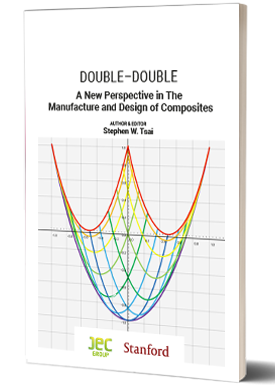Description
Flax and Hemp solutions meet not only the technical requirements of composite manufacturers in terms of innovative and high-performance reinforcements, but also societal expectations in terms of fiber traceability. Furthermore, the use of these fibers helps to reduce the environmental impacts of composites.
In response to this, the European Confederation of Flax and Hemp (CELC) has been working in cooperation with its European Scientific Council on a 2018 technical and scientific publication. This work is the result of sustained R&D within the structured European industry, and is geared to industrial expectations. This richly illustrated technical book, written by the 10 experts in the field, is based on an open innovation approach. It:
- Confirms that flax and hemp fibers provide efficient solutions for the composite industry;
- Focuses on the flax & hemp reinforcements available on the market;
- Shows that reliable solutions can be found through characterization and standardization;
- Presents other remarkable properties besides the fibers’ excellent mechanical performance, as added value for composite products;
- Discusses composite manufacturing processes and applications on the market in terms of a combination of know-how, from producers to manufacturers to finished products;
- Provides a view on sustainability through life cycle analyses.
As a follow-up to the two preceding editions (2012 and 2014) of the joint study “Flax and Hemp, a natural solution for the composite industry”, we are pleased to put out a new 2018 version of the work called “Flax & Hemp fiber composites, a market reality – The biobased solutions for the industry”, compiled by the European Confederation of Flax and Hemp Confederation – CELC for JEC Group and published by JEC Group
Publication date: March 2018
Also suggested
The 2012 and 2014 editions of the reference work “Flax and Hemp fibres: a natural solution for the composite industry” analyzed and reported on the mechanical performance of flax and hemp fibers, and gave an initial presentation of the processing methods used and the application of the fibers in composite products.
About CELC
As the only European agro-industrial organization to harness all production and processing stages for flax and hemp (10,000 European companies in 14 countries), the European Confederation of Flax&Hemp – CELC leads this industry of excellence in a globalized context. CELC’s purpose as a reference platform is to inform manufacturers of the advantages these fibers can bring to composites. Western Europe is the world’s leading producer of flax fiber, with France, Belgium and the Netherlands alone accounting for 80% of world production. This is guaranteed by EUROPEAN FLAX®, the traceability brand for all applications of premium-quality flax fiber grown in Western Europe.
















